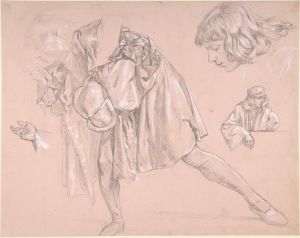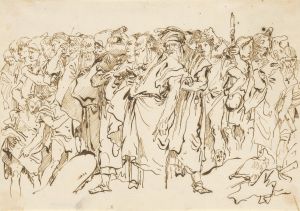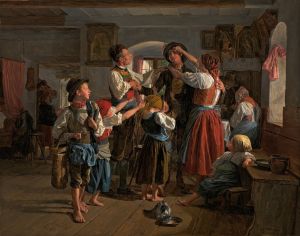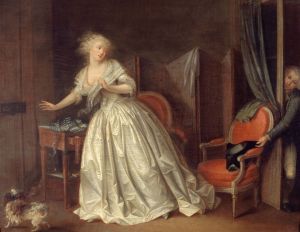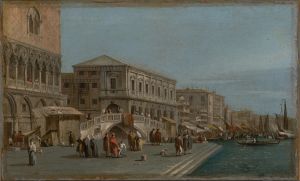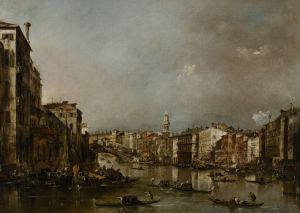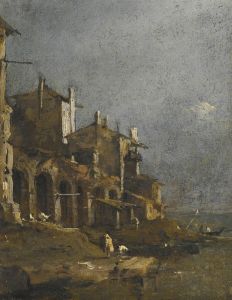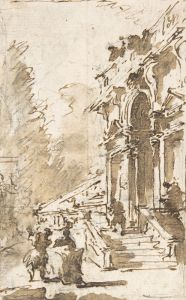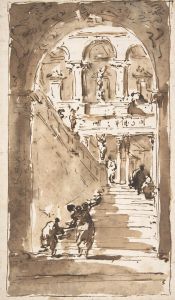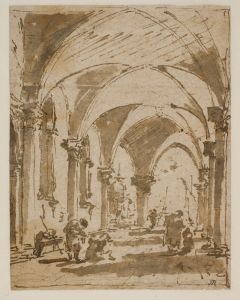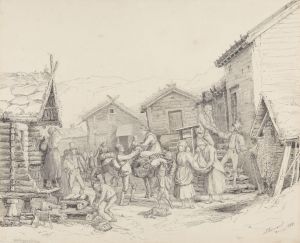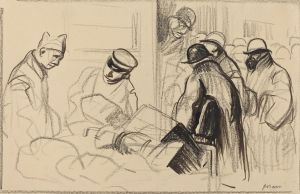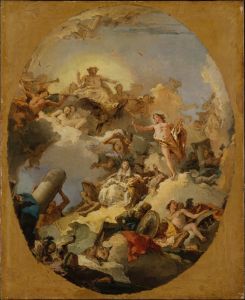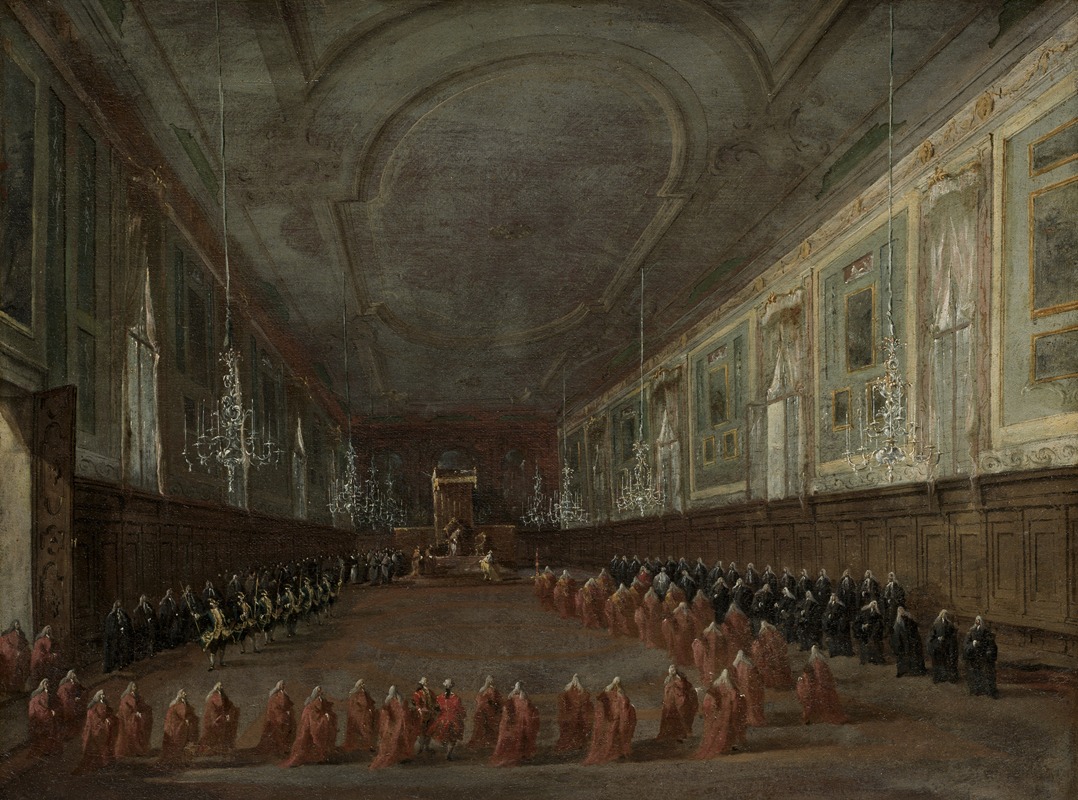
Pope Pius VI Descending the Throne to Take Leave of the Doge in the Hall of SS. Giovanni e Paolo, 1782
A hand-painted replica of Francesco Guardi’s masterpiece Pope Pius VI Descending the Throne to Take Leave of the Doge in the Hall of SS. Giovanni e Paolo, 1782, meticulously crafted by professional artists to capture the true essence of the original. Each piece is created with museum-quality canvas and rare mineral pigments, carefully painted by experienced artists with delicate brushstrokes and rich, layered colors to perfectly recreate the texture of the original artwork. Unlike machine-printed reproductions, this hand-painted version brings the painting to life, infused with the artist’s emotions and skill in every stroke. Whether for personal collection or home decoration, it instantly elevates the artistic atmosphere of any space.
Francesco Guardi's painting Pope Pius VI Descending the Throne to Take Leave of the Doge in the Hall of SS. Giovanni e Paolo, 1782 is a significant work that captures a historical event during the late 18th century. The painting depicts the ceremonial farewell of Pope Pius VI to the Doge of Venice in the grand setting of the Hall of SS. Giovanni e Paolo, also known as the Sala del Maggior Consiglio in the Doge's Palace. This event took place during the Pope's visit to Venice in 1782, a rare and notable occurrence that underscored the relationship between the Papal States and the Republic of Venice.
Francesco Guardi (1712–1793), a Venetian painter renowned for his vedute (view paintings) and capricci (architectural fantasies), was one of the last great masters of the Venetian school. His works are characterized by their atmospheric quality, loose brushwork, and ability to capture the essence of Venice's grandeur and decline. This painting is an example of Guardi's skill in depicting historical events with a sense of drama and movement.
The composition of the painting centers on Pope Pius VI, who is shown descending from a raised throne to bid farewell to the Doge, the elected leader of Venice. The scene is set within a richly decorated hall, with elaborate architectural details and a gathering of dignitaries, clergy, and Venetian officials. The figures are rendered with Guardi's characteristic style, emphasizing the interplay of light and shadow to create a dynamic and lively atmosphere. The painting captures the solemnity and formality of the occasion, as well as the opulence of Venetian ceremonial traditions.
Pope Pius VI (1717–1799), born Giovanni Angelo Braschi, was the head of the Catholic Church from 1775 to 1799. His visit to Venice in 1782 was part of a broader journey to meet Emperor Joseph II in Vienna, during which he sought to address tensions between the Papacy and the Holy Roman Empire. The stop in Venice was marked by elaborate ceremonies and receptions, reflecting the city's historical role as a major center of Catholicism and its unique political status as an independent republic.
The painting is considered an important historical document, as it provides a visual record of the interaction between two significant powers of the time: the Papacy and the Venetian Republic. It also reflects the artistic and cultural achievements of Venice in the late 18th century, even as the city faced political and economic challenges.
Today, Pope Pius VI Descending the Throne to Take Leave of the Doge in the Hall of SS. Giovanni e Paolo, 1782 is recognized as a masterpiece of Francesco Guardi's later career. It exemplifies his ability to combine historical narrative with his distinctive artistic style, offering viewers a glimpse into the grandeur and complexity of Venetian history.





